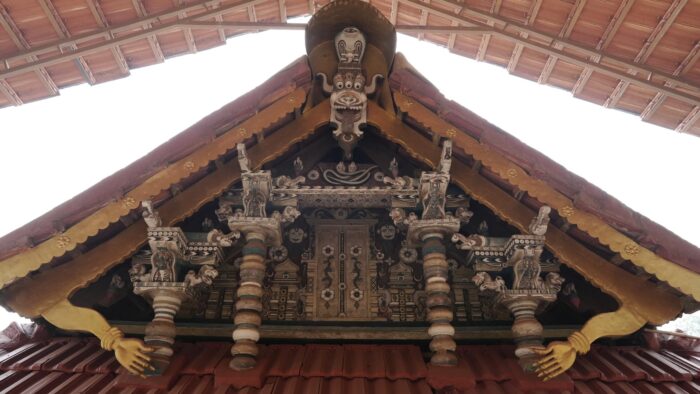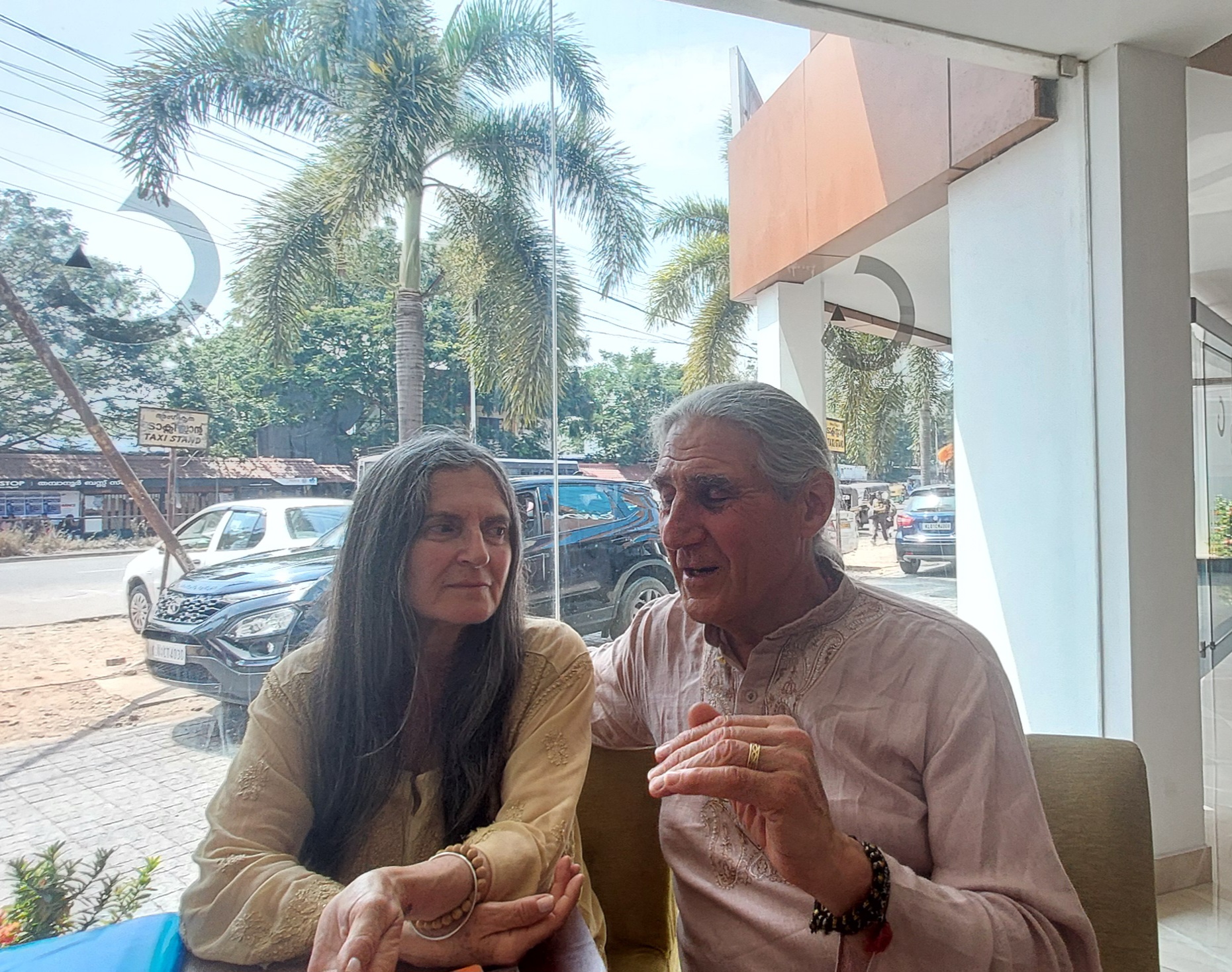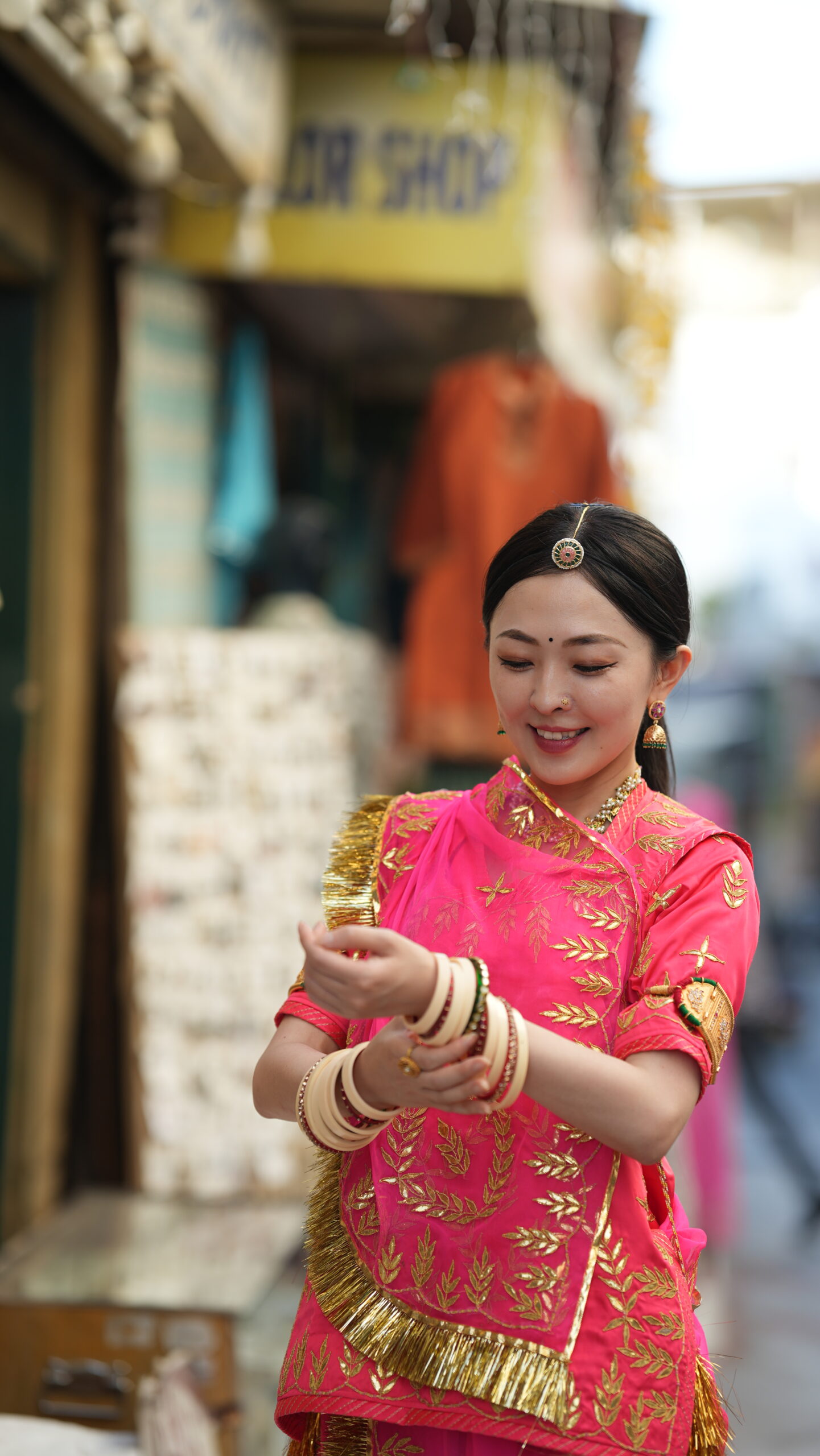In Search of 'Kha' with Dr. Mark Dyczkowski
It was a dream-come-true moment for me and my team. On a serene Sunday morning, December 26th, 2021, a message from Sachin S. Kumar, the Chief Editor of Śivam Magazine, arrived unexpectedly. He informed me that Dr. Mark Dyczkowski would be speaking at the Ishwar Asram Trust, Delhi, on none other than Abhinavagupta.
At the time, I was in the final days of my Delhi chapter, having just submitted my Ph.D. and preparing to leave for Kerala the very next day. Was this an accident, or HER divine play? The timing felt uncanny, as if orchestrated by some unseen hand.
That same morning, I received a call from Sujith Keśavan, one of my students. In an almost conspiratorial tone, he mentioned overhearing a secret recitation within the sanctum sanctorum of Kāḷarivathukkal Temple in Valapattanam, Kannur. One phrase stood out to him—“Bhāsādi Pañcakaṃ Proktam”—a reference, he said, to “the pentad containing Bhāsā.”
He sought my interpretation, and though I could not claim certainty, I told him it likely referred to the five divine acts: sṛṣṭi (creation), sthiti (sustenance), saṃhāra (dissolution), anākhyā (ineffable grace), and bhāsā (revelation)

Dr Mark Dyczkowski welcomed by the priests of Kaḷiyāmvaḷḷi Temple, Vadakara
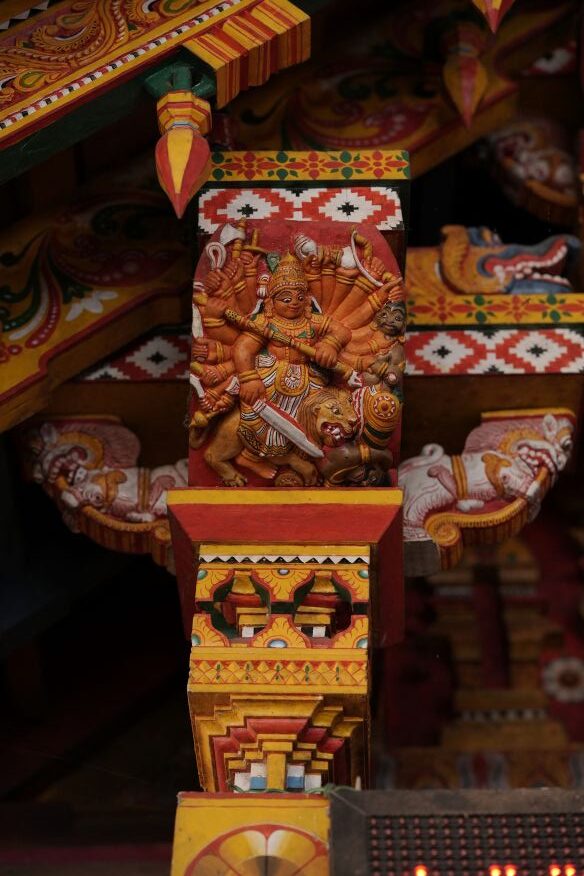
Mahishasuramardini carved at the entrance of Mannampurattukāvu, Nileshwaram
This conversation lit a spark within me—a renewed interest in the esoteric practices rooted in the Krama-Kula lineage of Kāśmīra Śaivism. The synchronicities deepened as I reflected on my earlier visits to Kerala’s Kavus (sacred grove) spaces. Over the years, I had visited more than a dozen temples dedicated to Kālī, each steeped in Śākta rituals. In 2020, during my research, I had an intuition that these temples might preserve echoes of the twelve Kālīs of the Krama system. This intuition was confirmed when Nārāyaṇan piṭārār of Maṭayikkāvu Temple whispered the deity’s name to me:
Mahābhairavaghoracaṇḍakālī!

Dr Mark and team at Tiruvañcherikkāvu, Koothuparamba
Exploring the thirteen Kali temples
Now, Sujith’s reference to Bhāsā reignited my curiosity. I began revisiting texts and happened to read about Bhānavī Krama, With these thoughts swirling, I attended Dr. Mark’s lecture later that day. Dr. Mark was magnetic. His profound discourse on Abhinavagupta and Śambhunātha transported us into the heart of Trika philosophy. Then, almost as if fate had scripted it, he casually mentioned the Bhānavī Krama. My heart raced at the serendipity of it all. Could this be another divine nudge?
After the lecture, I approached Dr. Mark, brimming with excitement. I shared with him my observations about Kerala’s Śākta temples and my hypothesis of their alignment with the Krama system. I invited him to embark on a journey through these temples, where the echoes of Kaśmīra’s sacred geography seemed to resonate.
As a part of this invitation, I played a recording of the Kramakālī Stotra, beautifully rendered in Carnatic rāgas by Bhagyalakshmi Guruvayur. Dr. Mark, known for his refined taste in music, listened intently, his face lighting up with appreciation. To my delight, he agreed to the tour. That moment felt like a culmination of countless threads weaving together—the scholarly, the spiritual, and the deeply personal.
It was during my conversation with Dr. Mark that he mentioned something unexpected. He spoke of a Polish individual—whose name he couldn’t recall at the time—who had also spoken to him about these Śākta temples in Kerala. I was taken aback. How could someone from so far away, someone outside the cultural fabric of these rituals, know of these deeply rooted traditions? It felt as if the threads of destiny were weaving themselves in ways I could barely comprehend.
As time passed, the tour we had envisioned did not materialize. Life moved forward, and so did our respective commitments. In the interim, I founded an institute dedicated to the study of Trika philosophy—the Abhinavagupta Institute of Advanced Studies—a milestone that remains one of the most fulfilling achievements of my life. The institute received recognition from the Ministry of Education, Government of India, as an Indian Knowledge Systems (IKS) research center.
Dr. Mark laid the foundation stone of this institute in an unconventional manner. Unable to be physically present, he joined us online while a proxy stood in for the ceremonial act. Even then, his presence felt deeply symbolic—a validation of the institute's vision and purpose.
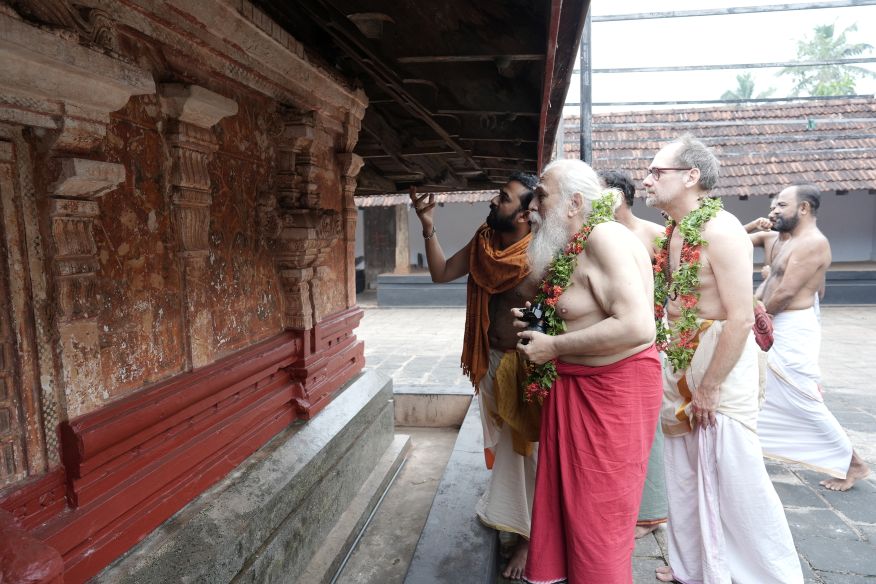
Mural Paintings at Kaḷiyāmvaḷḷi Temple, Vadakara
The very first program I envisioned was a pilgrimage with Dr. Mark through the thirteen Śākta temples of Kerala.
But as fate would have it, the plan remained unfulfilled for several years. Yet, the seeds of this journey continued to germinate.Then, on March 8th, 2023, Śivarātri, Kerala finally welcomed Dr. Mark in person. He came to receive the prestigious Rājanaka Puraskār award, which had been reconstituted by the Abhinavagupta Institute of Advanced Studies after decades of dormancy. He shared the honor with Prof. Navjivan Rastogi, and the award was conferred by the Honorable Vice President of India, Shri Jagdeep Dhankar.
This moment was monumental—a culmination of years of dedication, both scholarly and personal. And yet, amidst the grandeur of the occasion, Dr. Mark’s commitment to the simpler, more intimate vision remained steadfast. Once again, he expressed his desire to join us for the long-awaited tour of Kerala’s Śākta temples

Dr Mark Dyczkowski
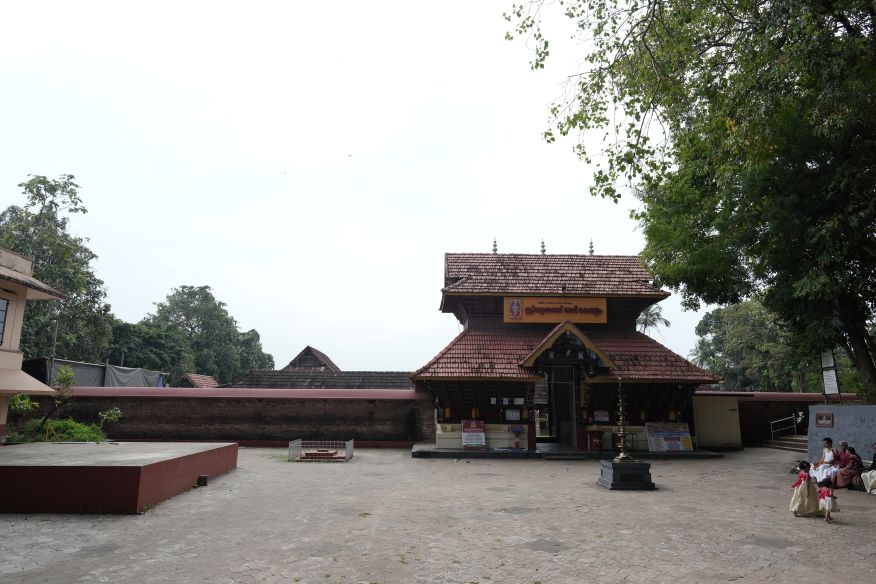
Śrī Valayanāṭ Kāvu, Kozhikode

Ganapati, carving from the entrance of Mannampurattukāvu, Nileshwaram
And finally, we made it happen—we explored the thirteen Kālī temples of Kerala. Each temple unveiled new dimensions of understanding, or rather, I would call it mahāprakāśa—a luminous awakening.
We began our journey at the northernmost kāvu, Mannampurath Kāvu in Nīlēśwaram, Kāsaragod. Dr. Mark interviewed the Mūtta Piṭārar(elder priest) of the temple, and to our amazement, he recited the dhyāna (meditation verse) and the nine-syllabled mūlamantra of the principal deity, Caṇḍayogeśvarī. This goddess, astonishingly, is mentioned in the Jayadrathayāmala Tantra!
Our next stop was Māṭāyikkāvu in Pazhayangadi, Kannur. Here, Dr. Mark received the darśana of the supreme goddess and engaged with the chief priest, Unnikrishnan Mūtta Piṭārar, and Narayanan Piṭārar to uncover more about this secret goddess and her worship. To his surprise, he found traces of Kashmir’s Tantric philosophy preserved within the rituals and traditions of this temple.
The third temple we visited was Māmānattu Kāvu in Irikkur, Kannur. As we stood before the radiant goddess Caṇḍayogeśvarī, I vividly remember Dr. Mark turning to me and saying, “If my Master—Swami Lakṣman Joo—were alive, he would have certainly come here to see this.” His words carried a profound sense of gratitude and reverence, and I could see the deep satisfaction reflected in his expression. It was a moment that truly humbled me.
Our journey continued to Kaḷarivātukkal Temple at Valapattanam, Kannur—the very place where Sujith had overheard the secret recitation that sparked this exploration. From there, we travelled to Kaḷiyāmvaḷḷi Temple in Vadakara, Kozhikode, and then to Tiruvañcheri Temple in Koothuparamba, Kannur.
At Thiruvañcheri, Dr. Mark had a remarkable moment of connection with the temple priests. They recognized some of the Yoginīs mentioned in scriptures like the Brahmayāmala and the Jayadrathayāmala. The temple welcomed him warmly, honouring his visit with a special arghya offering from the sanctum sanctorum—a rare privilege that underscored the significance of his presence.
Next, we visited Piṣārikāvu at Koyilandy, Kozhikode, followed by Valayanāṭ Kāvu, also in Kozhikode. Here, the presiding deity is associated with Kālarātri, the fearsome and protective aspect of the goddess.
At Valayanāṭ Kāvu, Dr. Mark delivered an inspiring speech on Kālarātri and Kālī, drawing from his book on the Yoginīs. He read passages from the Jayadrathayāmala. The audience received his insights with great enthusiasm, gaining a wealth of knowledge about the esoteric dimensions of the goddess.
Our journey then took us to Tirumāndhāmkunnu Kāvu at Angadippuram, Malappuram, a temple steeped in history and renowned for its association with the legendary Māmāṅkam. Here, Dr. Mark had the privilege of witnessing the ritualistic powder drawing and chanting ceremony, a profound moment that beautifully bridged art, devotion, and sacred geometry.


The team at Parumala Valiya Panayannār Kāvu temple
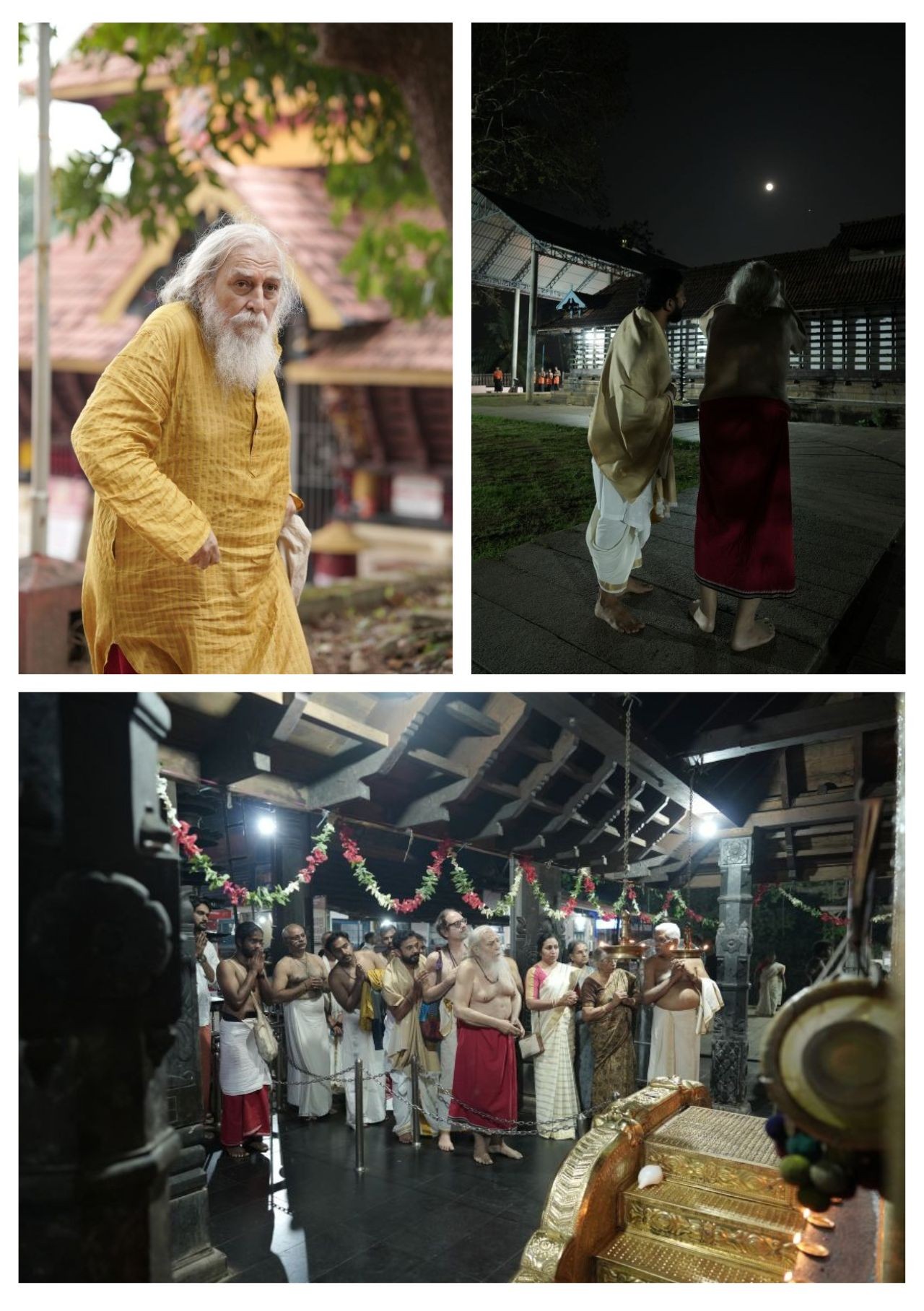
From there, we traveled to Kodikkunnattu Kāvu, followed by the iconic Kodungallūr Kāvu, a shrine deeply tied to the Śākta tradition and Tantric worship. At Kodungallūr, Dr. Mark was warmly received by Thrivikramanan Āḍikaḷ and had the sacred darśana of the Goddess. A particularly memorable moment was the enchanting performance of Kālasaṃkarṣiṇī Praveśa by the renowned Kuchipudi dancer Śrīla Śrī Rachana Narayanankutty, staged in his honor. The confluence of scholarship, devotion, and artistry in that moment left an indelible impression on all of us.Our journey continued further south to Parumala Valiya Panayannār Kāvu and Thiruvalla Muthoot Kāvu, where we received the divine darśana. On the sixth day, the tour came to a fulfilling conclusion. This remarkable pilgrimage across Kerala’s thirteen Kālī temples was more than an exploration; it was a rediscovery of sacred connections between Kerala’s Śākta traditions and the esoteric Tantric philosophy of Kashmir, brought to light by Dr. Mark’s unparalleled insights and reverence.
Six days, over five or six hours of travel each day, navigating uneven terrains and following a hectic schedule—yet Dr. Mark, with unparalleled devotion to the subject, carried on with unwavering energy and enthusiasm. At his age, his dedication to learning, his deep love for India and its rich traditions, was truly remarkable. The days spent with him were not just a journey through sacred temples; they were a journey into deeper understanding, immense joy, and profound insights.
Tantra is often called an Illuminated philosophy, and in these days, I came to understand its true meaning. It delves into the hidden dimensions of human consciousness, uncovering truths that are often veiled from the ordinary eye. Dr. Mark's insights illuminated the path for us, revealing the spiritual depth of each temple and the sacred traditions they hold.

The Abhinavagupta Institute of Advanced Studies (AIAS) feels deeply honored to have hosted Dr. Mark Dyczkowski, a scholar of unparalleled excellence. We express our heartfelt gratitude to the people of the Kāli temples who recognized the value and significance of this tour, and to those who made this journey possible.
We extend our thanks to the Honorable Minister of Devaswom Board, Sri VN Vasavan; PWD Minister Sri Mohammed Riyas; Sri M R Murali, the President of the Malabar Devaswam Board; the executive officers of the temples; chief priests; other temple officials; and the entire team who made this tour such a meaningful experience. Special thanks to Team Socialvaani and Sumin S Kumar for their excellent video coverage, K Viswanathan of Mathrubhumi newspaper for his invaluable support, Actor Mohanlal for his unwavering encouragement, J Prameela Devi for her graceful involvement, Anandkumar of Saigramam, and our dear friends Raluca, Adrian, and Arjun for their companionship.
Any great undertaking becomes possible when selfless individuals are involved. The success of this remarkable journey would not have been possible without the dedicated efforts and unwavering support of a few exceptional people. Sachin, the Editor-in-Chief of Sivam Magazine, played an instrumental role in bringing this vision to life. Abhiram, our AIAS Research Associate, worked tirelessly behind the scenes, ensuring every detail was meticulously planned. Dilip Mannar, Manikanta Kumar from Future Kerala, Vineeth, and Dhanup—all these individuals, with their precision and dedication, contributed immensely to the seamless flow of the journey.
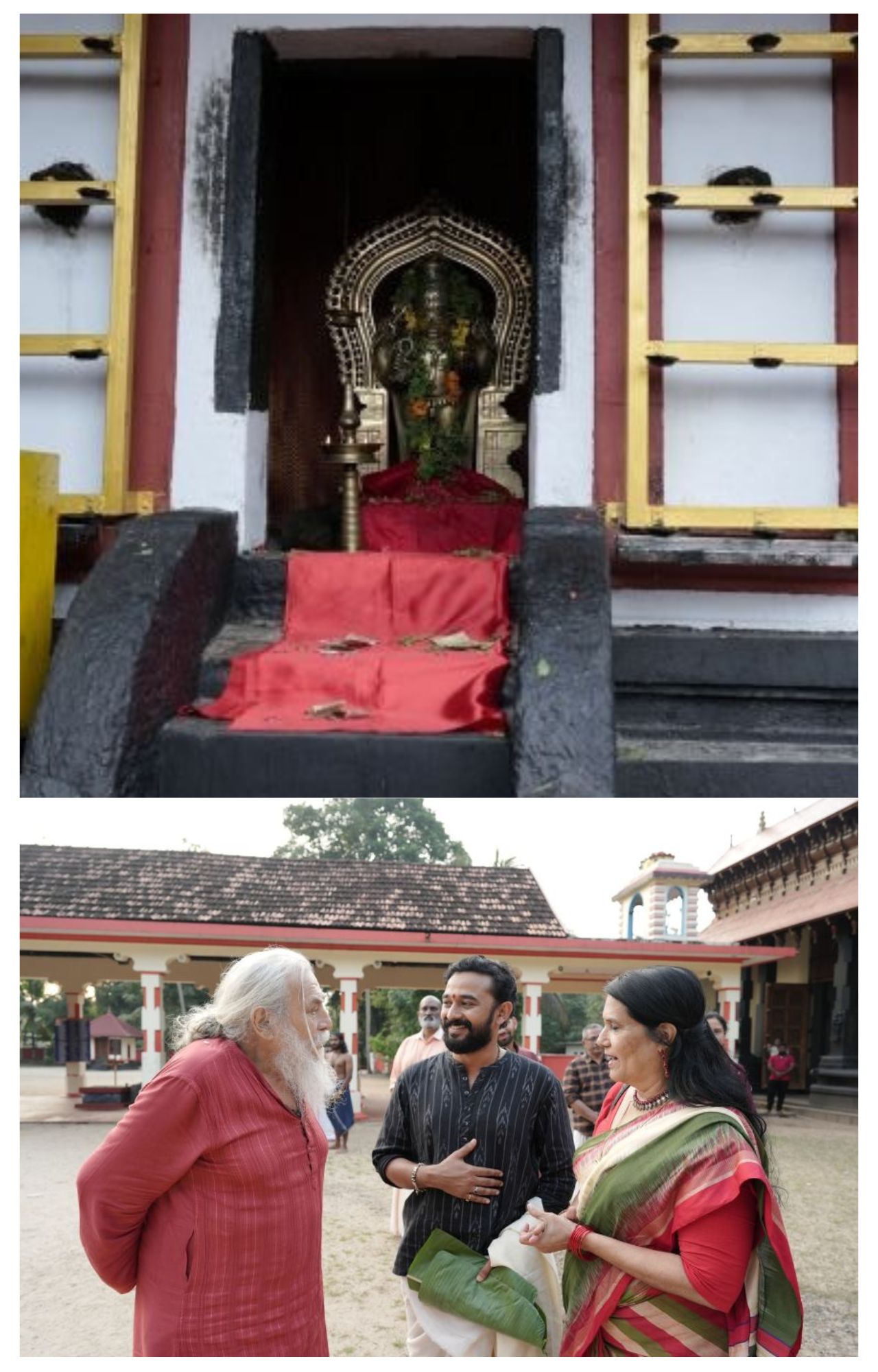
So, what is it that we seek in Search of 'Kha'?
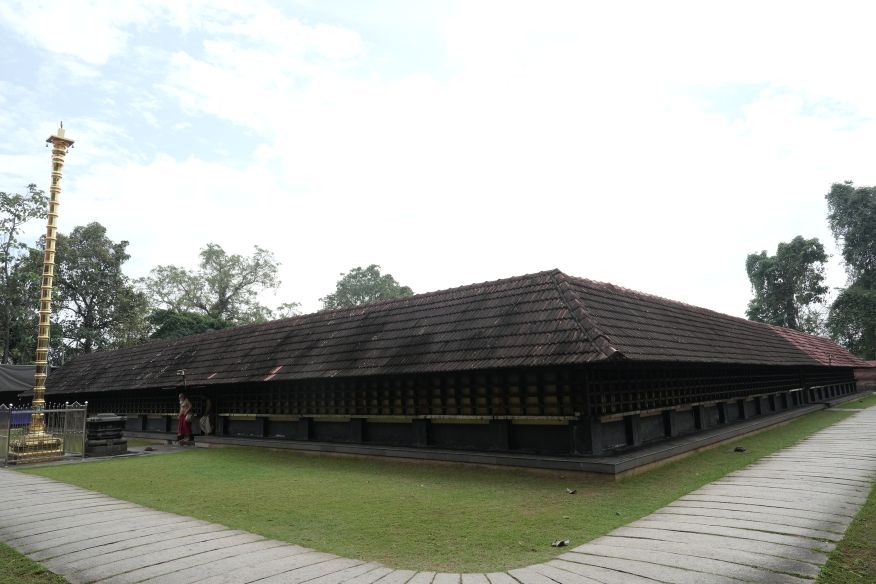
Śrī Valayanāṭ Kāvu, Kozhikode
It is the search for 'Kh' in Khphrem, the sacred sound and syllable that opens the gates to deeper understanding. It is the search for Kālasamkarṣinī, the devourer of time. It is the search for Kha, the vast sky of consciousness, where the soul can float freely, unbounded, as one in Khecarī—the state of transcendent flight.
She, the Divine Mother, illuminates all the five spheres of energies. She is the one who becomes everything—the infinite expanse of Vyomeśvarī, the celestial, the cosmic; Khecarī, the sky-dancer; Dikcarī, the guide of directions; Gocarī, the protector of herds (senses); and Bhūcarī, the sovereign of the earth. It is her blessings that allowed us to complete this historic journey.
The outcome of this journey, rich in wisdom and profound realizations, will continue to illuminate the paths of future learners and seekers who come after us. May it serve as a beacon for all those in search of truth, consciousness, and the boundless sky of Kha.
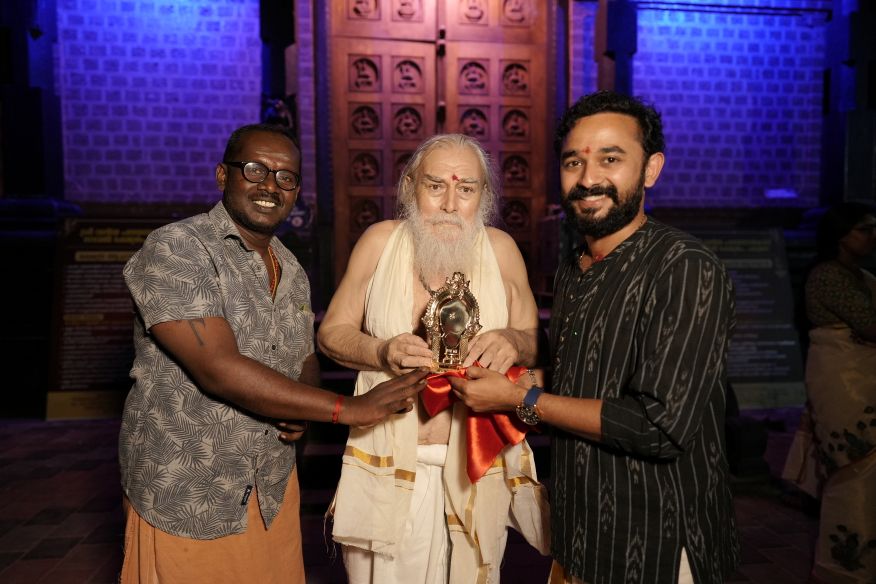
Sri Anu Ananthan and Dr R Ramanand hand over a metal mirror (vālkkaṇṇāṭi), a sacred object typically used to represent the Goddess in Kerala

